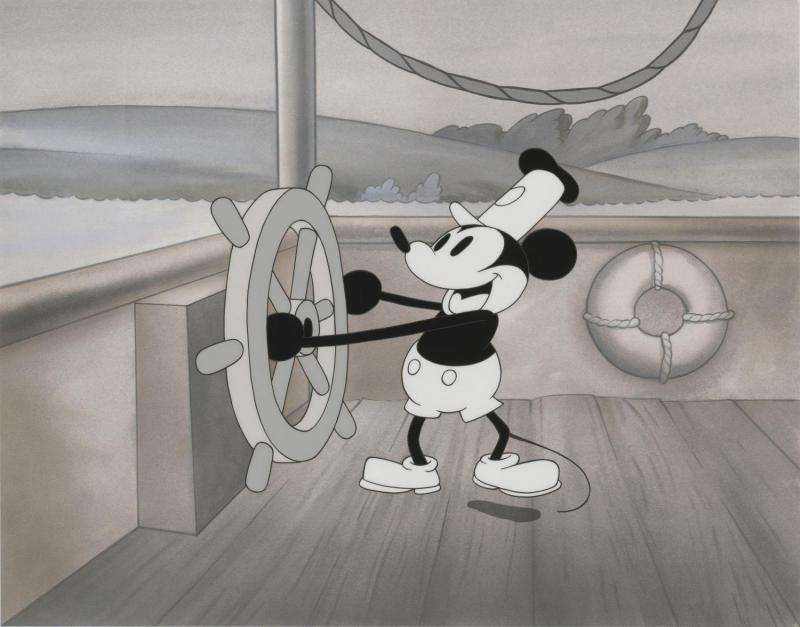Artificial 'nose' sniffs out pollution to protect Disney art on international tour

Original drawings and sketches from Walt Disney Animation Studio's more than 90-year history—from Steamboat Willie through Frozen—traveled internationally for the first time this summer. This gave conservators the rare opportunity to monitor the artwork with a new state-of-the-art sensor. A team of researchers report today that they developed and used a super-sensitive artificial "nose," customized specifically to detect pollutants before they could irreversibly damage the artwork.
The researchers report on their preservation efforts at the 251st National Meeting & Exposition of the American Chemical Society (ACS).
"Many pollutants that are problematic for human beings are also problematic for works of art," says Kenneth Suslick, Ph.D. For example, pollutants can spur oxidative damage and acid degradation that, in prints or canvases, lead to color changes or decomposition. "The ability to monitor how much pollution a drawing or painting is exposed to is an important element of art preservation," he says.
However, works of art are susceptible to damage at far lower pollutant levels than what's considered acceptable for humans. "The high sensitivity of artists' materials makes a lot of sense for two reasons," explains Suslick, who is at the University of Illinois at Urbana-Champaign. "Human beings are capable of healing, which, of course, works of art cannot do. Moreover, human beings have finite lifetimes, whereas ideally works of art should last for future generations."
To protect valuable works of art from these effects, conservators enclose vulnerable pieces in sealed display cases. But even then, some artists' materials may "exhale" reactive compounds that accumulate in the cases and damage the art. To counter the accumulation of pollutants, conservators often hide sorbent materials inside display cases that scrub potentially damaging compounds from the enclosed environment. But it is difficult to know precisely when to replace the sorbents.
Suslick, a self-proclaimed "museum hound," figured he might have an answer. He had already invented an optoelectronic nose—an array of dyes that change color when exposed to various compounds. But it is used largely for biomedical purposes, and it can't sniff out the low concentrations of pollutants that damage works of art. To redesign the nose with the aim of protecting artwork, he approached scientists at the Getty Conservation Institute (GCI), a private non-profit institution in Los Angeles that works internationally to advance art conservation practice. He proposed that his team devise a sensor several hundred times more sensitive than existing devices used for cultural heritage research. The collaboration took off, and the scientists built a keener nose.
At the time, GCI was involved in a research project with the Walt Disney Animation Research Library to investigate the impact of storage environment on their animation cels, which are transparent sheets that artists drew or painted on before computer animation was developed. Such research ultimately could help extend the life of this important collection. The new sensors would monitor levels of acetic acid and other compounds that emanate from these sheets.
Before the exhibit, "Drawn from Life: The Art of Disney Animation Studios," hit the road on tour, Suslick recommended placing the sensors in discrete places to monitor the pollution levels both inside and outside of the sealed and framed artworks. If the sensors indicated pollution levels inside the sealed frames were rising, conservators traveling with the Disney exhibit would know to replace the sorbents. An initial analysis of sensor data showed that the sorbents were effective. Suslick says he expects to continue expanding the sensors' applications in the field of cultural heritage.
Collaborators in the project include Maria LaGasse, a graduate student in Suslick's lab; Kristen McCormick, art exhibitions and conservation manager at the Walt Disney Animation Research Library; Herant Khanjian, assistant scientist; and Michael Schilling, senior scientist at the Getty Conservation Institute.
More information: Colorimetric Sensor Arrays for Monitoring Pollutant Exposure of Artwork, the 251st National Meeting & Exposition of the American Chemical Society (ACS), 2016.
Provided by American Chemical Society

















